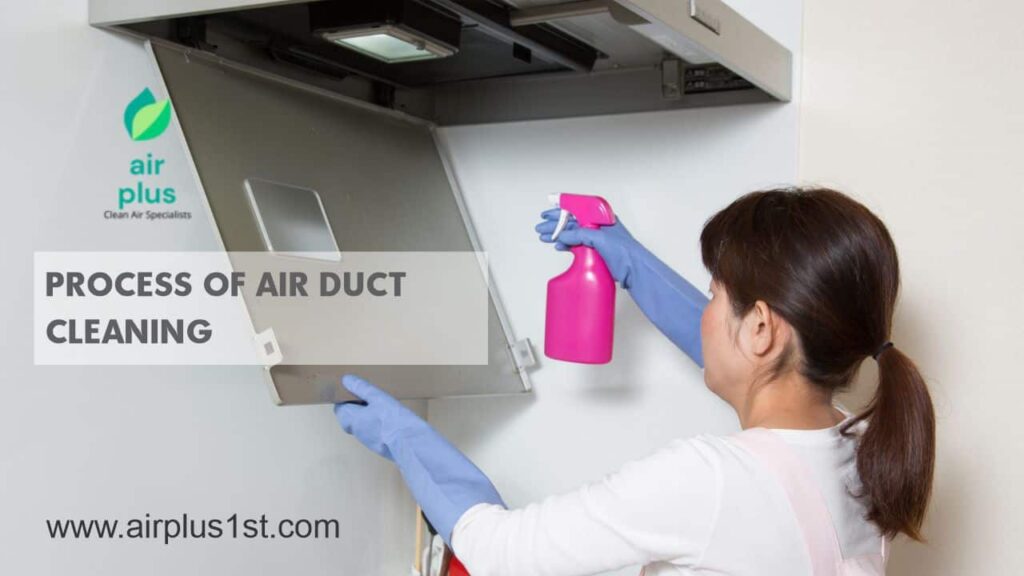In many homes, air duct cleaning is a crucial maintenance operation that is frequently overlooked. However, skipping this crucial step in home upkeep might result in a number of problems. include elevated allergens, decreased energy efficiency, and poor indoor air quality. We will walk you through the process of air duct cleaning and emphasize its significance in this in-depth step-by-step manual. the telltale signals that cleaning is necessary, as well as the advantages cleaning provides.
Why the Process of Air Duct Cleaning is Important?
Let us first examine the significance of air duct cleaning before moving on to the technique itself. Dust, filth, pet dander, and pollen accumulate over time. Other pollutants build up in the air ducts, causing debris to gather. This buildup limits airflow, lowering the heating system’s overall effectiveness. HVAC (heating, ventilation, and air conditioning) system. Furthermore, the quality of indoor air can be harmed by the presence of these contaminants. posing health risks, especially for people with allergies or respiratory disorders.
Signs That Your Air Ducts Need Cleaning
Understanding the symptoms that point to the need for air duct cleaning will help you take immediate action. Typical indications include:
- Excessive dust: After cleaning your furniture, if you see a lot of dust gathering there, it can be a clue that your air ducts are dirty.
- Mold growth: Mold in or around the air ducts is a definite indication that cleaning is required.
- Strange odors: The presence of contaminants in the ducts may be indicated by foul or musty scents coming from the vents.
- Allergy symptoms: If anyone in your family has allergy problems that are not well explained. Such as a cough, a cold, or itchy eyes. It is a result of filthy air ducts causing poor indoor air quality.
What Are The Benefits of Regular Air Duct Cleaning?
Regular air duct cleaning offers numerous benefits for both your health and your HVAC system’s performance:
- Improved indoor air quality: Allergens, dust, and other pollutants are less likely to circulate when air ducts are clean. Making the air you and your family breathe healthier.
- Energy efficiency: Your HVAC system uses less energy to maintain the optimum temperature when the air ducts are clean, which results in energy savings.
- Extended system lifespan: Cleaning the air ducts helps your HVAC system operate more efficiently and last longer.
- Reduced odors: Mold, mildew, or collected debris-related musty odors are removed by cleaning the air ducts.
What Is the Cleaning Process?
Before initiating the process of air duct cleaning, make sure to prepare adequately. Follow these steps:
- Turn off the HVAC system: To stop the spread of dust or debris while cleaning, turn off your heating and cooling system.
- Cover vents and registers: To prevent cleaning agents or debris from entering the living room. Cover the supply vents and return grills with plastic sheeting or cloth.
- Gather necessary tools and equipment: Prepare the cleaning process’s necessary tools. Use a vacuum with brushes, a high-efficiency particulate air (HEPA) filter. A cleaning solution as an example.
How You Can Inspect the Air Ducts?
Check the air ducts for any indications of damage, leaks, or mold development before starting the cleaning process. This stage makes sure that any underlying problems can be resolved before the cleaning is done.
Cleaning the Supply Vents and Return Grills
The supply vents and return grills should be cleaned first. To remove dust and dirt, take off the covers and use a vacuum with a brush attachment. Consider utilizing a cleaning solution made for the particular duct material in your home to remove more tenacious filth.
Cleaning the Main Ducts
The primary ducts should then be cleaned. To clear collected material, utilize a rotating brush system or a suitable brush attached to your vacuum cleaner. From the point of entry to the air handling unit. Make sure to clean everything thoroughly.
Cleaning the Blower Motor and Fan
You should use a gentle brush or vacuum cleaner to clean the blower motor and fan assembly. The dirt and debris removed in this stage can impact the performance of the system.
Cleaning the Air Handling Unit
Examine and clean the air handling unit the evaporator coil, drip pan, and drain pan, among other components. A qualified HVAC specialist can aid in this procedure and guarantee a thorough cleaning of these vital parts.
Sealing and Insulating the Ducts
Consider sealing and insulating the ducts to increase energy efficiency and stop air leaks. To stop heat loss or gain, cover any gaps or cracks using the proper materials, and insulate the ducts.
Final Inspection
After completing the cleaning and sealing process, conduct a final examination to ensure the successful completion of each stage. Verify for any lingering dirt, debris, or damage indications.
Conclusion
In order to maintain a healthy interior atmosphere and maximize the efficiency of your HVAC system, it is essential to keep your air ducts clean. You can effectively clean your air ducts and benefit from better indoor air quality by following this step-by-step manual. Longer system lifespan and energy efficiency. if you are unsure or would rather have help from an expert. Do not be reluctant to call a reliable HVAC professional. Enjoy the pleasure of a well-maintained HVAC system while inhaling clean, fresh air.

